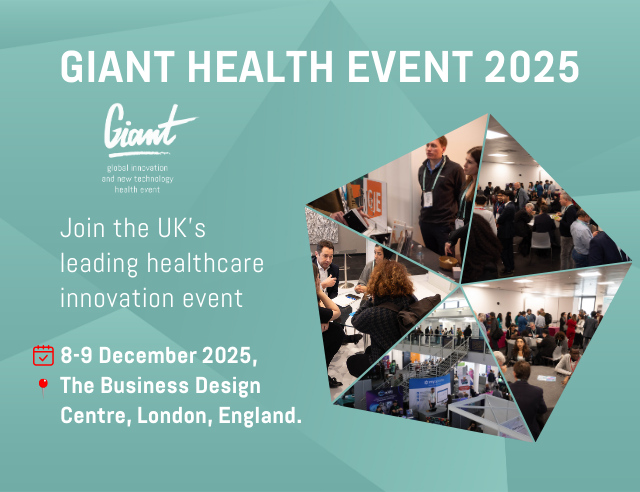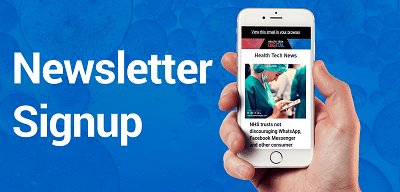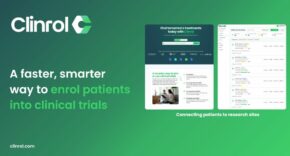
Currently, the global healthcare industry is experiencing monumental challenges due to aging populations and a chronic shortage of care staff. According to the UN, 1 in 6 people worldwide will be 65 years old or older in 2050 and WHO has published estimates that by 2030, there will be a global shortage of nurses numbering 4.5 million.
These projections look set to put healthcare staff and the systems they use under an unprecedented strain, with the severity of the challenge already close to tipping point. A decreasing number of healthcare professionals is facing an increasing amount of patient work, while, at the same time, navigating a work environment where legacy systems are being integrated with new solutions. While digital solutions, like chatbots, can alleviate the demands healthcare centers and clinics are facing by triaging cases intelligently, individual patients’ needs can easily be lost in the masses. Certainly, not every cough or a bit of fever requires a visit to the doctor’s office, but there may be cases – particularly with long-term chronic conditions – that would benefit from a combination of automated, analytical technology working side by side with clinicians.
The limitations of standardized healthcare
Everyday healthcare practices that we’re all familiar with as patients are typically based on standardized guidelines derived from data about populations rather than individuals. For example, treatments for chronic illnesses like chronic obstructive pulmonary disease (COPD) are based on global guidelines such as the GOLD (Global Initiative for Obstructive Lung Disease) Report, which outlines stepwise approaches to managing symptoms through inhalers, corticosteroids, and lifestyle interventions based on the disease’s severity. These guidelines are informed by population-level clinical trials and epidemiological studies. However, each individual has distinct health and behavior patterns, and implementing care guidelines into care plans requires flexibility.
Of course, treatment recommendations are based on a wealth of studies and data and, therefore, form an irreplaceable support for clinicians everywhere. It’s still worth exploring how healthcare systems could take steps towards more individualized healthcare without losing the benefit of decades of data and without putting more work on the already overworked healthcare professionals. Essentially, the long-term benefit here is the ability to enable the rapid reaction to worsening (or improving) signs, which prevents hospital episodes and even saves lives.
Remote patient monitoring as a bridge to personalized care
This is where remote patient monitoring (RPM) comes in. While hardly a new solution, RPM solutions fit seamlessly into clinicians’ everyday work and are aimed at addressing this gap in individualized healthcare. When a patient visits a clinic, that often creates just a few data points, like the blood pressure and heart rate during that specific appointment. With the help of cloud-connected medical devices and non-medical wearables, clinicians can collect endless amounts of these data points to keep a close eye on their patients’ health without needing to have the patient visit the clinic in person.
This consistent and continuous data allows healthcare professionals to detect early signs of health deterioration and adjust treatment plans accordingly, preventing significant setbacks or even needing to be admitted to the hospital. Not only does RPM save time and healthcare resources, it also provides patients with chronic conditions peace of mind, knowing that their health is in good hands.
Leading patient monitoring transformation with the power of AI
Sound familiar so far? Here’s where things get very interesting: The combination of artificial intelligence (AI) and remote patient monitoring represents the next phase of individual healthcare. AI algorithms are much faster and more effective than people at analyzing large volumes of data and generating predictions based on it. The same idea can be applied to RPM, which collects data on patients every single day – even continuously, depending on the monitoring device.
AI could then be harnessed to examine the subtle, day-to-day variations in a patient’s health metrics, drawing insights that human clinicians might miss – or where insufficient resources do not allow for constant follow-up. Now, to be clear, doctors and nurses would still oversee the flags raised by AI and make all the healthcare-related decisions together with their patients, allowing professionals to concentrate on the patients who most benefit from care.
Moving beyond real-time monitoring and towards predictive healthcare
But AI could analyze these hundreds of data points much faster than a human, help organize the accumulating data, and provide different points of view into the data. Over time, AI would learn to predict potential health declines in advance based on the individual’s unique data, enabling more preemptive and personalized interventions than ever before.
These analyses wouldn’t just depend on data collected through devices. The system could factor in data from the patient’s previous measurements and tests through their electronic health records. This way, past medical history, medications, and even family health history would be taken into account down to the most granular numbers and test results, which clinicians rarely have time to dive into when they begin to care for a new patient.
Moreover, with AI-driven RPM collecting data from diverse populations, we may be able to fill in previously unidentified knowledge gaps in medical research. For example, demographic groups that have been historically underrepresented in research and medical data could, in the future, receive more evidence-based, individualized care.
Overcoming the potential roadblock of legislation
While the potential of AI and RPM is there, there are several challenges to overcome before healthcare data flows seamlessly and is quickly analyzed to support patient care. Ever since the digitalization of health data began, there have been concerns about validity, privacy, and data security. It is critically important that software and data systems used in RPM are certified as medical products in compliance with the regulations of each country. In Europe, the new Medical Device Regulation (MDR) sets high standards, categorizing such devices under the CE Class IIa level. In the United States, the FDA establishes a regulatory framework based on specific use cases of RPM.
In addition, it’s equally essential that sensitive data be safeguarded with the utmost care. Currently, the Health Insurance Portability and Accountability Act (HIPAA) is in place in the U.S., requiring entities to implement safeguards like encryption, access controls, and regular audits to protect electronic health information. In Europe, the General Data Protection Regulation (GDPR) mandates that organizations handling health data ensure explicit consent, data minimization, and robust security measures like pseudonymization and breach notification controls. These both provide solid foundations for legislation that will need to adapt to accommodate the increasing role of digital technologies in healthcare systems.
Also, as part of its digital strategy, the European Union (EU) wants to regulate AI to ensure better conditions for the development and use of this innovative technology. The EU proposed Artificial Intelligence Act is aimed at ensuring the safe and ethical use of AI across its member states. It classifies AI systems by risk levels and imposes corresponding obligations on developers, deployers, and users.
The future of AI-assisted healthcare: Collaboration is key
Those who fulfill all the above criteria and put intentional effort into fusing AI with RPM technology are set to transform personalized patient care and perhaps improve health outcomes in the long term. However, no single company – no matter how capable – can single-handedly bring the next era of healthcare to reality. It will require commitment from healthcare and technology providers, the scientific community, and legislators working together to build, pilot, and polish the future of individualized, technology-driven healthcare.
As the healthcare industry continues to grapple with the challenges and seizes the opportunities that AI and RPM bring, we will also take steps towards more equitable and effective healthcare where the data will advocate for the patient.
About the author: Lasse Rousi, CEO, Medixine Ltd
Lasse Rousi joined Medixine in November 2019, bringing business development skills and broad international expertise from the digital healthcare market to Medixine. Previously, Rousi worked at CGI as Director of the company’s Welfare and Healthcare business. At CGI, Rousi gained a deep understanding of the demands of the healthcare industry as he worked with notable companies in Europe. He also has long-standing experience in successfully leading software development and delivering client projects. In previous positions, he has experience in leadership and development roles at growth companies. http://www.medixine.com











